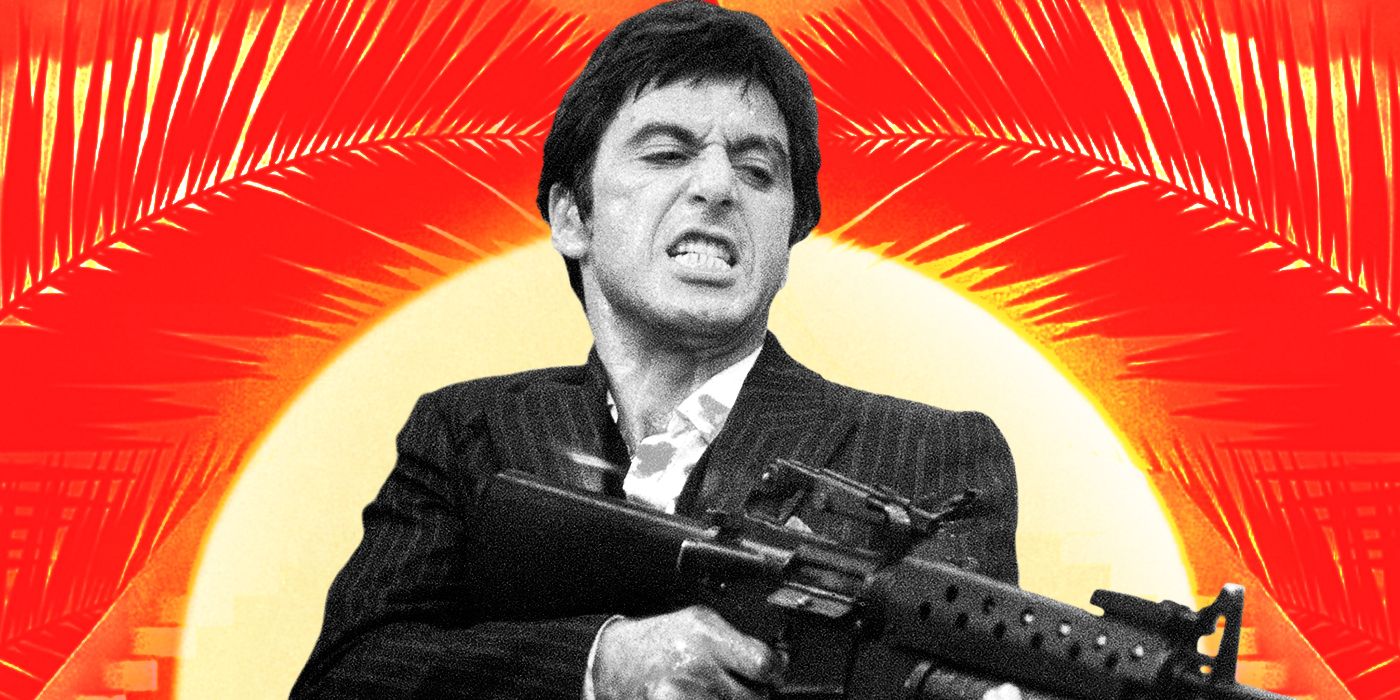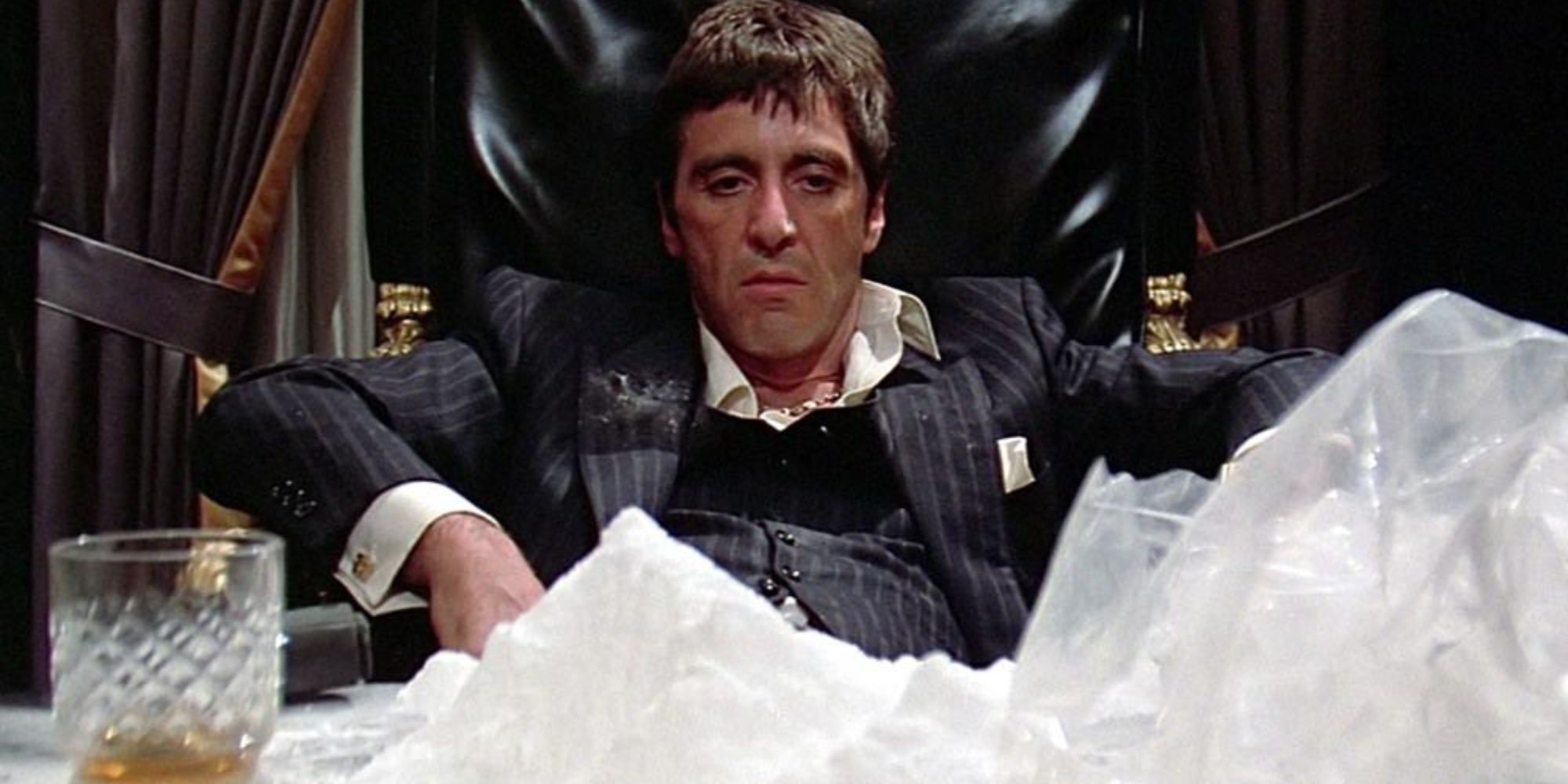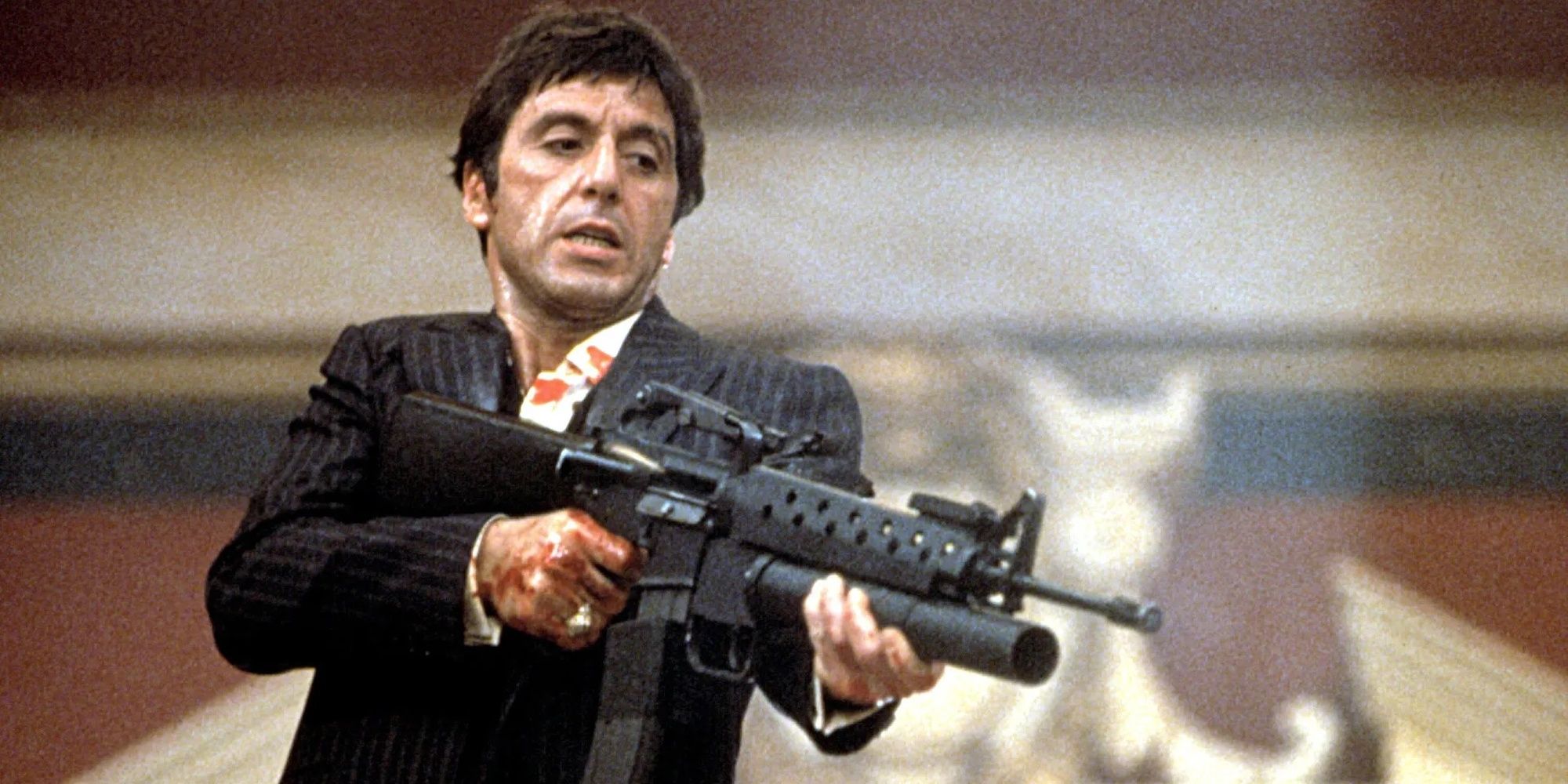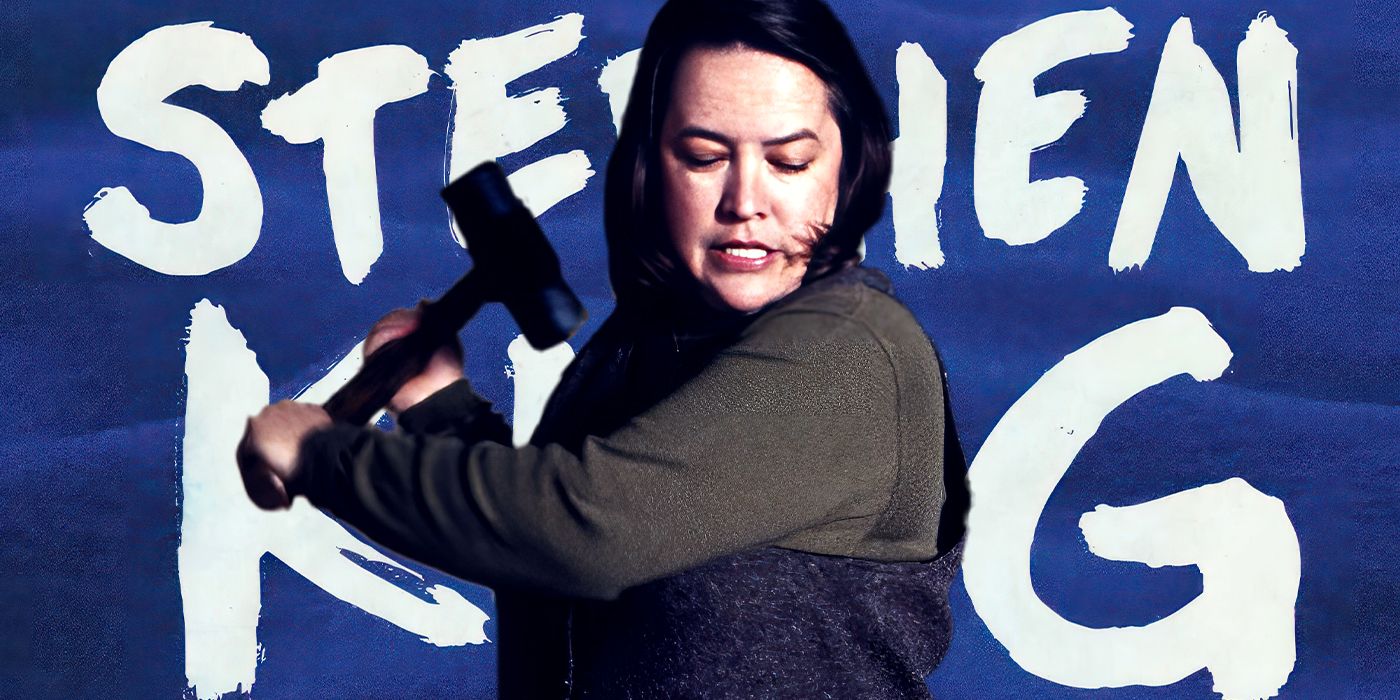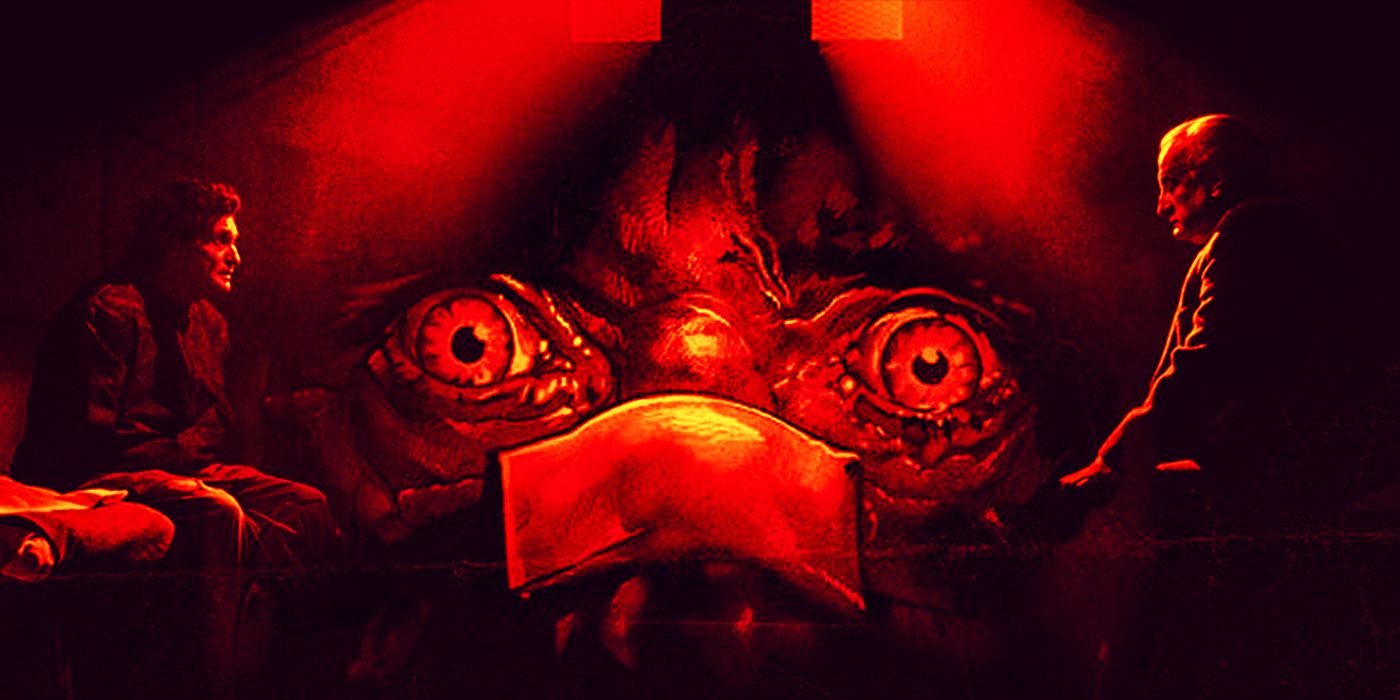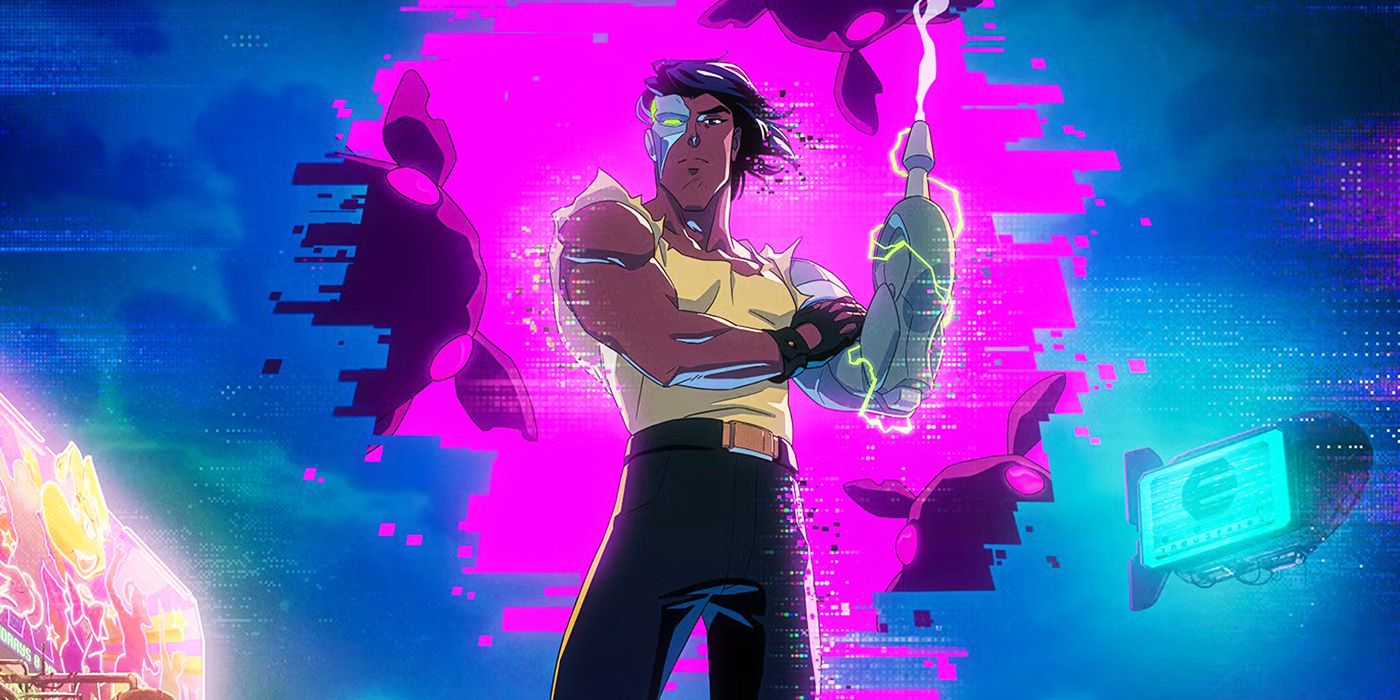- Al Pacino’s performance as Tony Montana in Scarface is iconic and has left a lasting impact on audiences.
- The movie’s hypnotic ending, filled with violence and chaos, is a key moment that sticks with viewers.
- Despite its controversial reputation, Scarface has become a cult classic and continues to spark polarizing opinions among critics.
Al Pacino’s most commended role might have been as Michael Corleone, but his loudest and most unforgettable performance arguably comes from Brian De Palma’s Scarface. The movie’s spirit drifts alongside Pacino, who delivers an unforgettable performance as Tony Montana, peaking and plummeting Though the movie was reviewed harshly at the time of its release, it was catapulted into a cult status with passing years, frequently topping the charts of gangster movies. Pacino’s performance, a compelling story and grand set designs are all a part of its charm, but what truly leaves a lasting impact is the movie’s hypnotic ending.
What Happens In ‘Scarface’?
The movie is set during the ’80s, when the tensions between Cuba and the United States were rising. Many Cuban citizens who considered themselves political prisoners were seeking asylum in the US. So, Fidel Castro, the communist leader of Cuba at the time, released some 25,000 fugitives, sending them off to US. And one of these fugitives is Tony Montana (Al Pacino), a hard-boiled, hot-headed guy who wants to make something out of himself in the land of the dreams. Montana doesn’t get handed his American green card easily though, he has to kill a communist for it. But not that he minds, of course (“I’d kill a communist for fun, but for a green card I’d carve him up real nice.”) Upon completing the kill, Montana receives his green card, alongside his loyal accomplice, Manny (Steven Bauer). The two work at a restaurant for a period of time, but Montana believes he’s destined for greater things.
Tony finally gets his chance to shine after meeting Miami drug kingpin Frank Lopez (Robert Loggia). Working under him, Tony learns the tricks of the trade, and accrues wealth and influence. But Tony’s ambition is too great for him to be held anywhere but the top spot, and soon enough, he murders Frank and begins working with Sosa (Paul Shenar), an extremely wealthy and powerful drug overlord from Bolivia. Tony’s cocaine empire yields him great success — he lives in an absurdly ostentatious mansion, has a tiger as a pet and a beautiful woman he’d always coveted as his wife.
But none of it translates to happiness. If anything, Tony grows more miserable and distrusting of those around him. His mother disapproves of his criminal path and doesn’t want anything to do with him, his wife grows tired of his obsession with money and leaves him, his friend, Manny, gets weary of being looked down upon, and his sister, Gina (Mary Elizabeth Mastrantonio), is frustrated with his overprotective attitude. So, despite having all that he wanted Tony is more alone than ever. What’s more, he gets set up by the IRS, and he might be looking at a couple of years in prison. But Sosa comes to his aid and proposes that if Tony helps dispose of a certain high-profile activist, he won’t have to spend any time in prison. Tony accepts the deal, but when it is time to act, he hesitates because the activist is with his wife and kids, and Tony might be a ruthless gangster, but he isn’t without principles. This act of mercy lands him on Sosa’s kill list, and he sends an army of hit squads to finish Tony.
How Does Scarface End?
After the botched assassination attempt, Tony returns home to learn that his sister has been missing. Upon investigating, he finds out that Gina is at Manny’s house, and in a fit of rage, he kills Manny. But he comes to regret his decision as Gina reveals that they recently got married and were planning to surprise him. Tony takes Gina to his home, lays her to sleep with the help of pills and drowns himself in cocaine and remorse. But when Tony’s sitting in his office stoned and wallowing in his pain and anger, Gina walks into the room with a maniacal smile, wearing nothing but a robe. She has a gun in her hands and craziness in her eyes, she walks towards Tony suggesting that he killed Manny because Tony wanted her for himself, and then she starts shooting at him while repeating, “Fuck me, Tony!”
But her revenge rampage is cut short when one of Sosa’s man shows up behind Tony and starts firing an automatic gun at her. Tony takes the shooter down, but he can’t save Gina. And soon, his mansion gets filled with Sosa’s men. They kill all of Tony’s men and stand vigil outside his doors to finish him off too. But Tony has no intention of going down easy, so loads up his grenade launcher, yells out an iconic line — “say hello to my little friend!” — and blasts away the door and the men waiting to kill him. And then he launches into a cocaine-fueled killing spree, firing indiscriminate bullets at everyone around him. And after he runs out of bullets, he doesn’t escape but just stands there, swallowing all the bullets, refusing to fall. It’s only after he gets shot with a shotgun at a point-blank range that he falls into a pool next to a flashy globe that says “The World Is Yours.”
‘Scarface’s’ Enduring Legacy
Now 40 years after its release, Scarface remains a controversial movie, and not just for its unrestrained violence. Critics can’t seem to agree if it’s a great movie or just a hollow spectacle that revels in its own excess. Roger Ebert held the movie in high regards, praising the manner in which Tony Montana was carved out to be a compelling character, one that “stays in the memory, taking on the dimensions of a real, tortured person.” On the other hand Leonard Maltin suggested that the movie is unpleasant and unnecessarily violent and that it “offers no new insights except that crime doesn’t pay.”
Interestingly, Martin Scorsese somehow saw this hatred coming. Halfway through the movie’s premiere, Scorsese turned to the filmmaker and said, “You guys are great — but be prepared, because they’re going to hate it in Hollywood … because it’s about them.” Though now Scarface has cemented itself as a cult classic, the debate still rages on. But even this polarity of opinions is a testament to the movie’s enduring legacy in the way it still manages to elude any conclusive opinions. It may not be considered the hallmark of a movie that’s a masterpiece, but it’s certainly the hallmark of a movie that’s interesting through and through.

